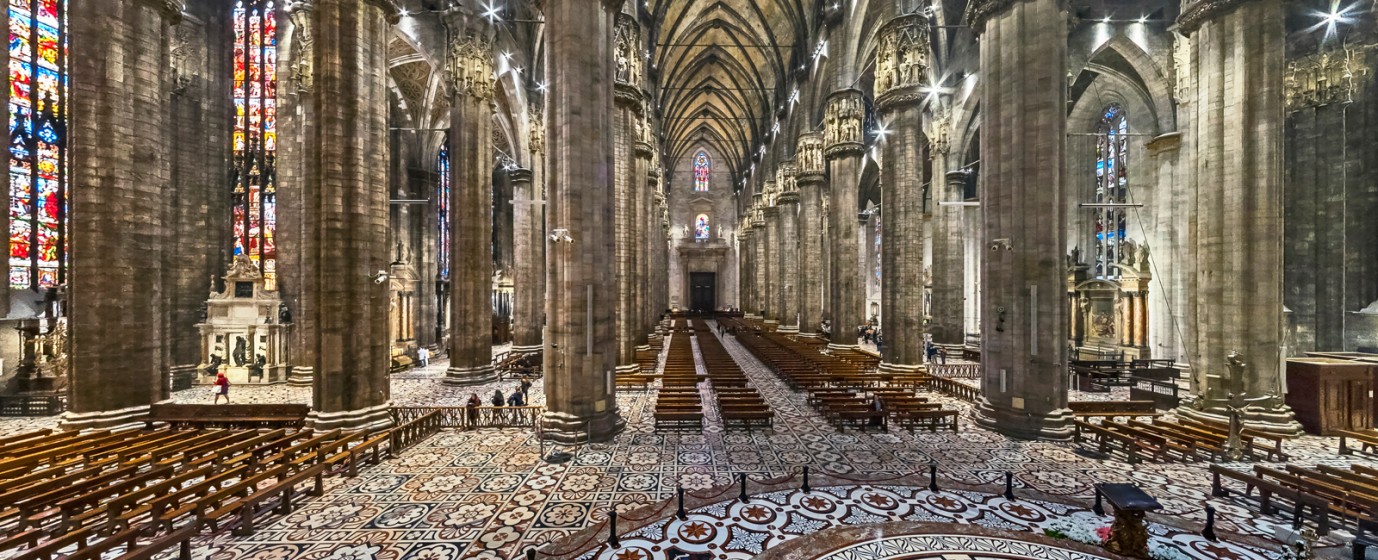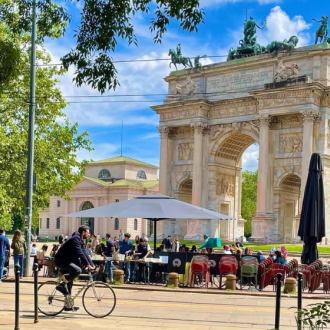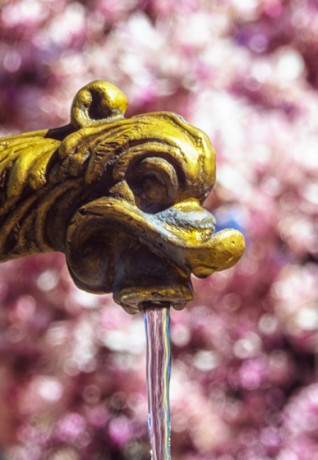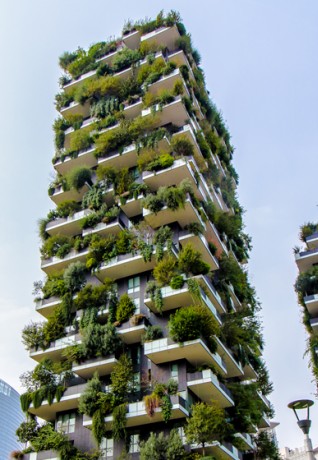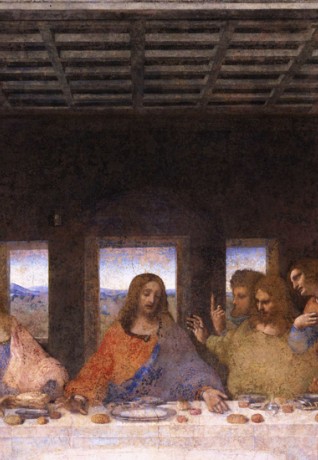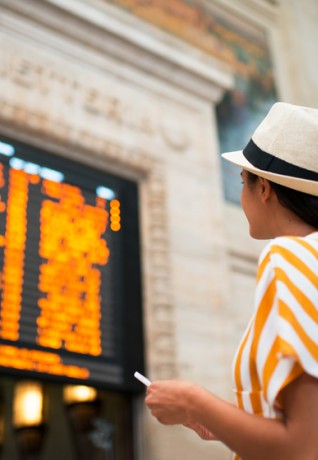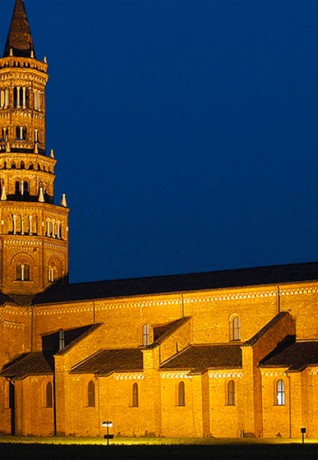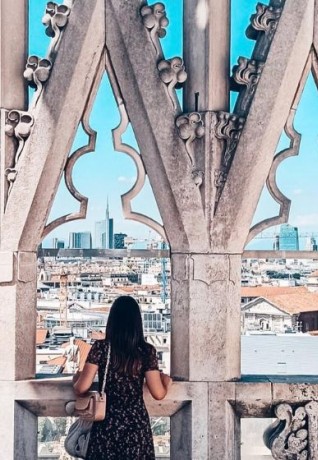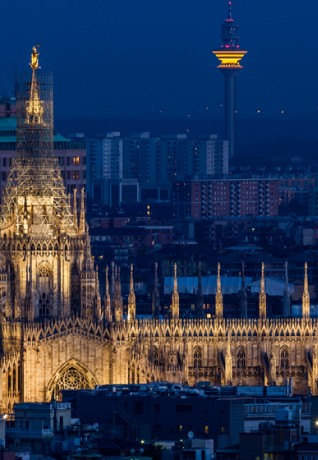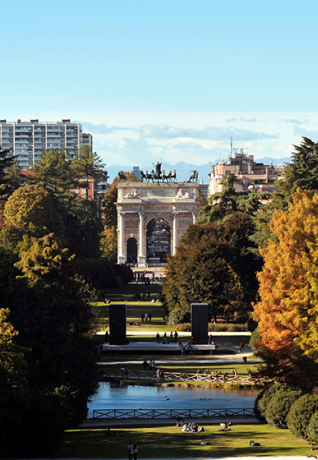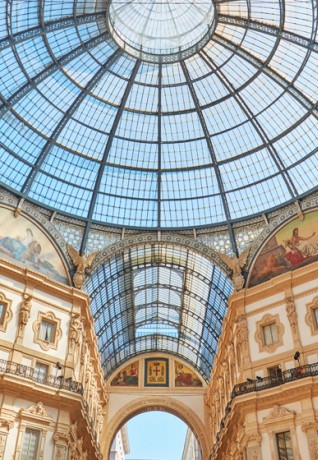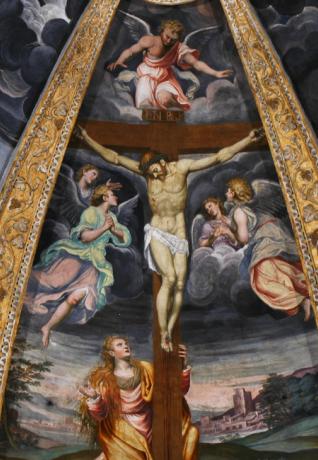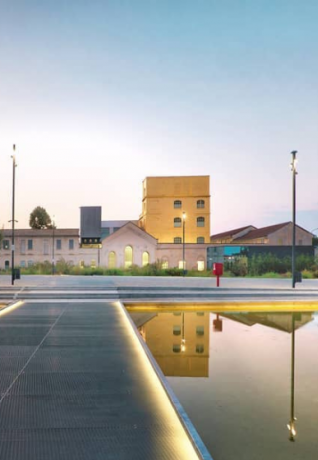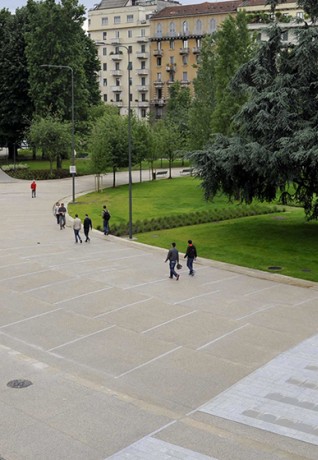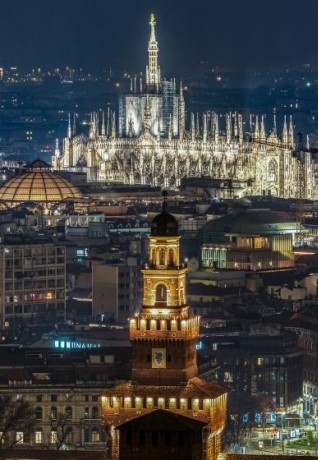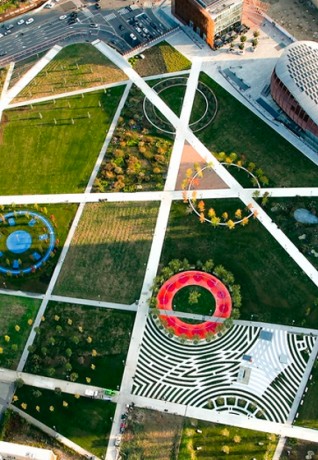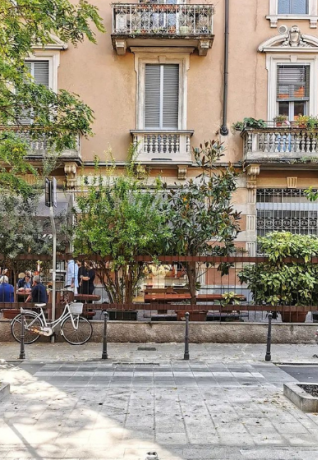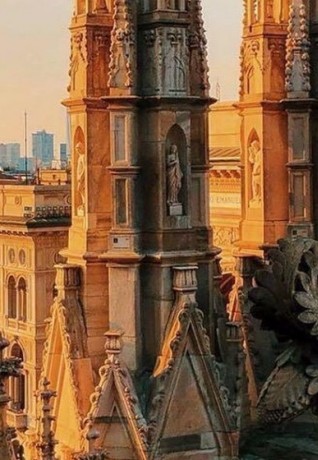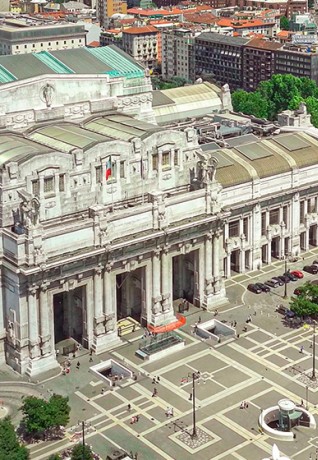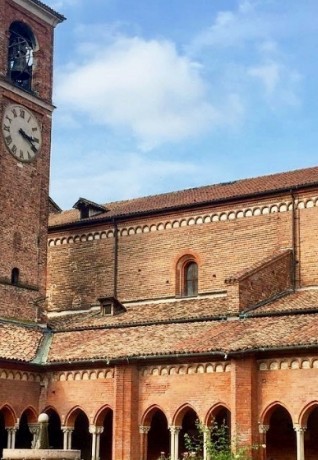The diocese of Milan is one of the largest in the world and is the only bishopric in the western Church to maintain its own Ambrosian liturgical rite, originally introduced by Saint Ambrose, the Patron Saint of the city. This extensive and important diocese includes some Catholic Churches of major historical and artistic interest.
The first stop on this religious and artistic itinerary is the iconic symbol of Milano, and possibly the most important Gothic building in Italy, the Duomo. The second is the first Western church built in the shape of a Latin cross, San Nazaro, followed by the paleo-Christian basilica of San Lorenzo Maggiore.
At a short distance, we come across two of the most ancient churches in Milano, Sant'Eustorgio and Sant’Ambrogio. The latter is the most important example of Romanesque architecture in Lombardy. The itinerary then leads to two Renaissance jewels: Santa Maria delle Grazie, a UNESCO World Heritage Site, and San Maurizio al Monastero Maggiore. The itinerary ends up with San Marco - the cradle of the Augustinians, San Simpliciano - one of the basilicas founded by St. Amborse, and the late-Renaissance church, Santa Maria della Passione.
The symbol of the city. The Late Gothic Duomo, in pink-veined white marble with its characteristic spires and the gilded statue of Our Lady - the Madonnina - on top. It is the symbol of Milan in the whole world.
Founded in the fourth century by St.Ambrose, the Basilica of San Nazaro Maggiore was the first religious construction built in the shape of a Latin cross in the Western Catholic world. It houses relics of the Apostles and the body of St. Nazaro.
Even though it has been restored several times over the centuries, the magnificent early Christian basilica - dating back to the late 4th - early 5th century - still retains its imposing monumentality.
The Basilica of Sant'Eustorgio in the Porta Ticinese area - historically a crossroads for communication and trade due to its closeness to the Laghetto di Sant’Eustorgio (now the Darsena dock) - is one of the most ancient churches in Milan. It was built on the site where St. Barnabas baptized the area's first Christians and it is famous for the legend regarding the relics of the Three Kings that were once treasured within.
The basilica, founded by Bishop Ambrose in the late fourth century, was rebuilt in the Romanesque style in the eleventh century: this is the building which we can still see today. However, the Church conserves the original structure and late Roman and early Christian sculptural and epigraphic remains. The inner chapel of San Vittore in Ciel d'Oro houses spectacular fifth-century mosaics.
Santa Maria delle Grazie, Church and Dominican convent, is an exceptional testimony of Renaissance architecture in Milan. Its history is associated with Duke Ludovico il Moro and his sumptuous court. It is also associated with the Last Supper by Leonardo da Vinci.
The church of San Maurizio al Monastero Maggiore is often described as 'Milano's Sistine Chapel' because it contains one of the most beautiful and complete cycles of sixteenth-century Lombard frescoes, very well preserved.
The church, its façade originally casting its reflection in the waters of Naviglio Martesana and the inner ring canal - outside the city walls, has been rebuilt several times. A visit inside is a good occasion to explore Milano's mysteries but, most of all, to admire frescoes and paintings by the celebrated painters Lomazzo, Procaccini, Crespi and Campi.
The largest basilica commissioned by Saint Ambrose was dedicated to virgins and built in the fourth century on an area that was originally contained in the city’s pagan cemetery. Within are relics of the saints Martirio, Sisino, Alessandro and Simpliciano.
The Basilica of Santa Maria della Passione is one of themost important monuments of the late-Renaissance in Milano and can be considered a veritable art gallery.

 Log in
Log in
